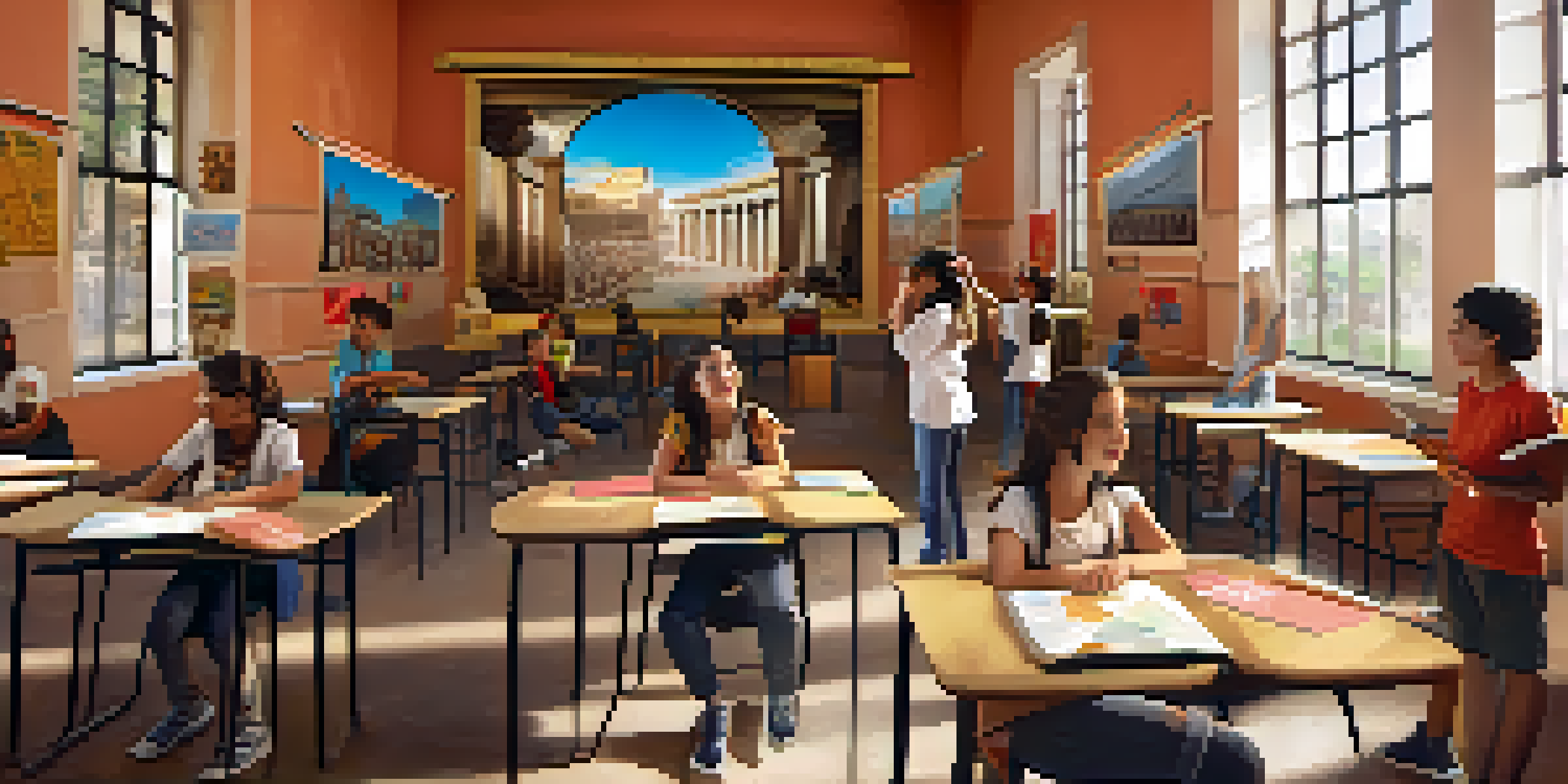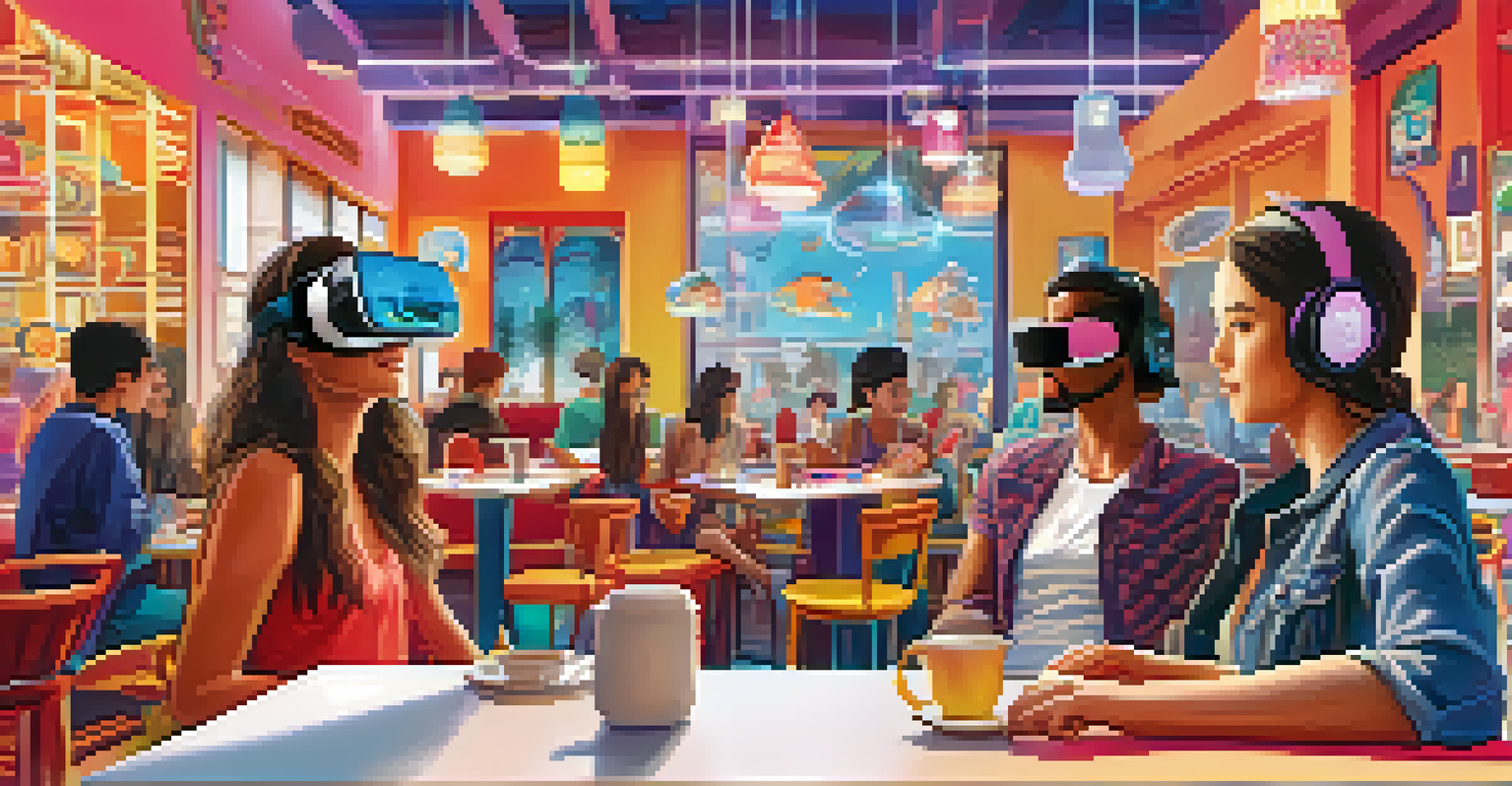The Significance of VR in Enhancing Cognitive Learning Theories

Understanding Cognitive Learning Theories
Cognitive learning theories focus on how we learn through thought processes, rather than through external stimuli. This approach emphasizes the importance of mental activities like problem-solving, memory, and understanding. By diving into how our brains process information, we can better understand the effective methods for teaching and learning.
The more senses we engage during learning, the better we remember information.
For instance, theories like Piaget's stages of cognitive development highlight the need for learners to engage with material actively. This engagement fosters deeper understanding and retention of knowledge. In essence, cognitive learning is about building connections and frameworks that help learners make sense of what they encounter.
As educators seek innovative ways to facilitate learning, integrating technology into the classroom has become increasingly vital. Virtual Reality (VR) is emerging as a powerful tool that aligns perfectly with cognitive learning principles, making complex concepts more accessible and engaging.
The Rise of Virtual Reality in Education
Virtual Reality has gained traction in various sectors, and education is no exception. This immersive technology allows learners to experience scenarios firsthand, breaking the traditional barriers of classroom learning. With VR, students can explore historical sites, conduct scientific experiments, or even navigate complex mathematical concepts in a simulated environment.

For example, imagine a history lesson where students can walk through ancient Rome or a science class that takes them on a journey through the human body. These experiences help learners visualize and contextualize information, making it more relatable and memorable. Unlike textbooks, VR provides a dynamic way to engage with content, catering to different learning styles.
Cognitive Learning Drives Engagement
Cognitive learning theories highlight the importance of active engagement and mental processes in enhancing understanding and retention.
Moreover, VR can foster collaborative learning experiences, allowing students to work together in virtual spaces. This not only aids in knowledge retention but also enhances social skills, as learners communicate and solve problems together, reflecting real-world interactions.
How VR Supports Active Learning
Active learning is a cornerstone of cognitive theories, emphasizing participation in the learning process. VR supports this by encouraging students to engage directly with the material rather than passively absorbing information. When learners interact with VR environments, they become active participants, which significantly boosts their comprehension and retention.
VR experiences can cultivate a deeper understanding of diverse perspectives.
Consider a physics class where students can manipulate objects to see the effects of gravity in real-time. This hands-on approach not only solidifies theoretical knowledge but also allows learners to experiment and discover principles on their own. The ability to make mistakes and learn from them in a safe environment is invaluable.
By providing instant feedback and a platform for exploration, VR effectively turns learning into an adventure. This sense of agency and involvement fosters a deeper understanding of concepts, aligning with the core ideas of cognitive learning theories.
Enhancing Memory Retention with VR
One of the most compelling benefits of VR in education is its potential to enhance memory retention. Cognitive learning theories suggest that the more senses we engage during learning, the better we remember information. VR immerses users in multi-sensory experiences, combining visual, auditory, and even tactile elements to reinforce learning.
For instance, a language learning app that uses VR can place students in a virtual café where they practice conversation with avatars. The contextual learning experience helps them remember vocabulary and phrases better than traditional rote memorization techniques. This immersive environment creates strong associations in the brain, linking emotions and experiences with the content.
VR Transforms Educational Experiences
Virtual Reality offers immersive, multi-sensory learning experiences that make complex concepts more relatable and memorable.
Additionally, VR's ability to recreate realistic scenarios allows learners to form mental images and narratives around the information they are studying. This storytelling aspect can make lessons more engaging and memorable, ensuring that knowledge sticks long after the lesson ends.
Promoting Empathy Through VR Experiences
VR is not just about engaging with content; it also has the power to foster empathy, a crucial component of social learning. By placing users in someone else's shoes, VR experiences can cultivate a deeper understanding of diverse perspectives. This ability to experience life from another viewpoint aligns well with cognitive learning theories that emphasize the social aspect of learning.
For example, a VR simulation might allow students to experience life in a different culture or face challenges that others encounter daily. These experiences can shift perceptions and encourage compassion, making students more aware of global issues. Such empathy-driven learning can motivate students to take action and become advocates for change.
Furthermore, integrating empathy into the curriculum enhances critical thinking skills. It encourages students to analyze situations, consider various viewpoints, and engage in meaningful discussions—skills that are vital in today's interconnected world.
Challenges and Considerations of VR in Learning
While the benefits of VR in education are promising, there are challenges to consider. Not all institutions have access to the technology or the resources required to implement VR programs effectively. Additionally, educators need training to integrate VR seamlessly into the curriculum and to maximize its potential.
Another aspect to consider is the potential for motion sickness or discomfort some users may experience while using VR headsets. This can detract from the learning experience if not managed properly. Creating short, focused VR sessions can help mitigate these issues, allowing students to enjoy the benefits without adverse effects.
Empathy and Critical Thinking via VR
VR fosters empathy by allowing students to experience different perspectives, enhancing critical thinking and social awareness.
Lastly, it’s essential to ensure that VR content is aligned with educational goals. As with any educational tool, the focus should remain on enhancing learning outcomes rather than relying solely on technology for its own sake.
The Future of VR in Cognitive Learning
Looking ahead, the potential for VR in enhancing cognitive learning theories is vast. As technology continues to evolve, we can expect even more sophisticated and interactive experiences that cater to diverse learning needs. The future may bring personalized VR learning environments that adapt in real-time to suit individual student progress and preferences.
Moreover, as VR becomes more mainstream, collaborations between educators, technologists, and content creators will likely lead to the development of more robust educational resources. This synergy can result in immersive experiences that not only captivate students but also provide deep, meaningful learning.

Ultimately, the integration of VR into education is about creating a more inclusive and effective learning ecosystem. By harnessing the power of this technology, we can unlock new ways for students to explore, understand, and engage with the world around them.